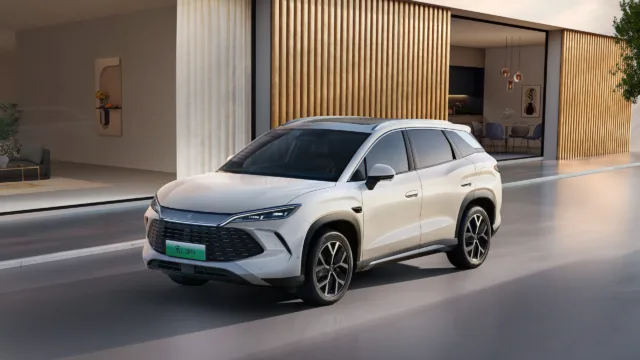Support CleanTechnica’s work through a Substack subscription or on Stripe.
BYD announced its 3Q results at the end of October. Revenue was down 3%, while net profit was down 32.6%. Overall, that does not look good compared to their recent growth and fell short of expectations. But it gets more interesting when you get into the details.
Not only did R&D expenses go up 31%, but development capital expenditures went up a whopping 519.65% YoY “mainly due to the increase in in-house R&D investments.” Most of their research and development is still accounted for as expenses (43.75 billion RMB versus 3.15 billion RMB), but that is clearly a significant increase. In combination, R&D was roughly twice net profits, and net profit would have gone up if R&D was flat.
Inventory was up 31.83%, due mainly “to the augmentation of automobile business.” In other words, updated product that has not yet been delivered.
“Contract liabilities” went up by 40.29% YoY, “mainly due to the increase in advance receipts of the automobile business.” In other words, those are deposits taken on vehicles that have not yet been delivered. Having obligations to deliver vehicles that have already received deposits is overall a good kind of liability.
Non-current assets were up 50.36%, while long-term receivables were up 54.90%, mainly due to increases in leasing. This foreshadows future revenue.
The balance sheet overall saw a significant improvement, with assets up 15.14% and shareholder equity (assets minus liabilities) up 32.53%. Construction in progress was up 144.15%, with several global factories being built, as well as the world’s largest R&D center. However, borrowing is up while payables are down, with shifts on the balance sheet likely reflecting shorter payment terms in vendor contracts.

Product Updates Out of Season
Typically, product in China is updated in 1Q, when sales are seasonally low. Older models are depleted from dealer inventory. Factories shut down to retool for new models. New model production starts. Initial manufacturer inventory of new and updated models is built up. Models are launched and preorders start. Orders are placed. Initial vehicles are delivered to dealers. Production ramps up.
The short-term interruption largely goes unnoticed during the slow season. First half model introductions increase sales in following quarters. BEVs saw stronger introductions in 1H, and sales growth was stronger. A handful of models sometimes launch later in the year, but they typically tend to be a relatively small part of the total. 3Q launches are normal in the US, but 3Q tends to be one of the best sales quarters in China. At the same time, competition increases during the strong sales season. Launching new product in 3Q/4Q is almost like a retail store remodeling during Black Friday… not the best timing.
Early in 3Q, the big news pertained to the Sealion 06. This brand-new model, offered in both PHEV and BEV, was introduced to replace BYD’s previously best-selling model, the Song Plus. It is the equivalent of Tesla replacing the Model Y or Toyota replacing the RAV4 with new models. This kind of product disruption alone would have a significant impact on 3Q numbers. We did see the fastest ramp-up in BYD history, producing over 100,000 vehicles in the first 100 days, but the impact on the sales charts from wind-down of the Song Plus and replacement with the Sealion 06 was noticeable.
Then, in late September, BYD launched what it called the “second generation” PHEV and BEV Qin Plus, its second-best-selling car. Overall, this was more of a comprehensive mechanical and interior refresh than an entirely new generation. However, range essentially doubled for the PHEV models.
But it didn’t stop there. Basically, every PHEV model was being updated out of cycle for 2026. Some were updated a matter of months after their last product refresh. Equipment improved with some interior enhancements, like moving to a column shifter. Technologies like refrigerators, HUD, adaptive damping, etc. became more prevalent. Small cosmetic changes were made, like the Song L updating door handles ahead of regulatory changes. But the biggest change was to the powertrain. Efficiency improved and battery range almost doubled across the lineup. After a PHEV minivan launch on Tuesday, 2026 PHEV updates should be done, to ramp and deliver in the rest of 4Q.
Regarding why this is happening, a big reason is regulations. At the beginning of 2026, PHEVs will be required to exceed 100 km of range to qualify for a 5% purchase tax exemption. BYD’s new PHEVs will qualify, with their higher-spec versions offering significantly more range. Clearing out older inventory in 3Q means that dealers will not be stranded with vehicles that become hard to sell at the start of 2026. While we only recently found out about the PHEV regulatory changes, BYD likely had a bit of advanced warning. There was clearly a shift in strategy that started during 2Q.

Sales Data Gives Context
Looking closer at 3Q sales helps to understand what is going on. PHEV sales were down 23.72%, driven by the Chinese market. BEV sales were up 31.37%, while overseas sales were up 146.42%. Outside of Chinese PHEVs, BYD sales are doing great.
As financial results were released slightly before the end of the month, waiting to see October sales results gave further context. Overseas sales rose even more, up 155%. Sales were down YoY, but up from September. Still largely dragged down by PHEV sales in China. Looking at the breakdown, the drag clearly comes from PHEV-intensive Dynasty models. The largest impact comes from Song models, with the Song Plus being phased out and the other PHEV Song models updated in late-October, with a slight uptick from September. Han models saw stronger signs of recovery, having seen its product update happen earlier in the month. Meanwhile, Sealion models are reaching record highs.

Investing in Product Transition
The kind of development scramble needed to significantly update the majority of a company’s product in a matter of months is expensive. It is also something that few automakers can execute that quickly. That scramble put BYD at a disadvantage during the typically strong 3Q, while competitors were stepping up sales. Meanwhile, BYD increased deposits for vehicles that have not yet been delivered and has started to build up inventory to fill those deliveries. Clearly, they have a plan, despite the changes. Whether or not everything works to plan is a good question.
In 1Q 2026, they will likely be well positioned for PHEV sales in China compared to some competitors. The price paid in 3Q could pay off next year. Overall, BEVs are expected by many to perform better in the long term. But the new PHEVs are far more capable and able to operate more as EVs, with roughly twice the battery range. That should help Chinese PHEV sales in the near term. Meanwhile, the increase in factory construction will fuel growing global sales. And the ever-increasing R&D expenditure will fuel new products, particularly for BEVs. We have already seen a more capable and likely RWD Yuan Plus in regulatory filings and a new Dolphin model, also likely with RWD, has been seen in spy shots. We should also see other BEVs introduced in 1Q. The temporary sales decline does not reflect a business retreat.
Overall, BYD is going through some expensive transitions. Looking at the details, sales and financial performance are atypical for the quarter. While BYD navigates the product and regulatory changes, they are still solidly profitable with increasing shareholder equity. And they are massively investing in future growth. Less agile competitors could fall behind, with industry consolidation expected. Whether their changes out of cycle lead to a return to the kind of stellar growth that we have come to expect or not remains to be seen.
Sign up for CleanTechnica’s Weekly Substack for Zach and Scott’s in-depth analyses and high level summaries, sign up for our daily newsletter, and follow us on Google News!
Have a tip for CleanTechnica? Want to advertise? Want to suggest a guest for our CleanTech Talk podcast? Contact us here.
Sign up for our daily newsletter for 15 new cleantech stories a day. Or sign up for our weekly one on top stories of the week if daily is too frequent.
CleanTechnica uses affiliate links. See our policy here.
CleanTechnica’s Comment Policy








